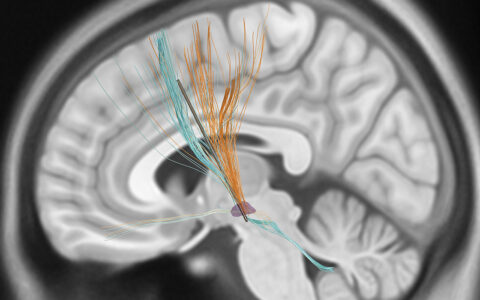For the first time, researchers have quantified and compared the expected post-operative cranial changes in infantile hydrocephalus from ventriculoperitoneal shunt (VPS) placement and endoscopic third ventriculostomy with choroid plexus cauterization (ETV/CPC).
Providing a foundation of post-operative parameters should allow surgeons to better determine whether a treatment was successful when conducting follow-up.
Study Design
Pediatric neurosurgeons working in Monroe Carell Jr. Children’s Hospital at Vanderbilt were the lead authors on the multi-center study that was published in the Journal of Neurosurgery in April 2018.
“When new treatments are developed, it is important for us understand how they compare to existing treatments,” said Robert Naftel, M.D., assistant professor of pediatric neurosurgery at Vanderbilt University Medical Center. “We are fortunate to have strong relationships with other leading pediatric neurosurgery centers who are equally passionate about treating hydrocephalus.”
“We are fortunate to have strong relationships with other leading pediatric neurosurgery centers who are equally passionate about treating hydrocephalus.”
There were 72 young infants with an average age of three months enrolled in the retrospective study—54 who had undergone VPS placement and 18 who had undergone ETV/CPC. All surgeries were deemed successful at the time of a 6-month follow-up.
Ventricular size, head circumference (HC), and fontanelle assessments at presentation and 6-month follow-ups were used as the measures for comparison. Patients were matched by age and etiology to provide as perfect a data comparison as possible.
Evidence to Better Define Success
The results showed that ventricular size was greater following ETV/CPC than after VPS placement. VPS placement showed a 27 percent reduction in ventricular volume whereas those undergoing ETV/CPC did not have a significant reduction in ventricle size.
The absolute change in HC and change in HC percentile were similar between the two treatments, although the final post-operative HC percentile was higher in ETV/CPC patients—76th percentile for ETV/CPC versus 54th percentile for VPS.
A bulging fontanelle normalized in 97 percent of patients across both treatments, showing it to be a reliable indicator of success.
“With these measurements surgeons will now be able to more comfortably define success.”
“The difference in ventricle size was expected, but now objectively defined,” Naftel said. “No difference in change of HC was a surprise. This paints a portrait of what success looks like compared to shunting.”
The study is unique in that it is the first to specifically compare the outcomes of infantile hydrocephalus surgery. Previous studies have focused on a much older population or have used ETV treatment rather than ETV/CPC in the comparison. The intercranial dynamics in infants are significantly different than those of older children due to the brain’s high growth rate in the first year of life.
The results provide surgeons with a basis and framework for determining hydrocephalus treatment success. They also set expectations for follow-up measurements, providing a valuable tool to guide decision-making, both pre- and post-operatively.
“With these measurements surgeons will now be able to more comfortably define success,” Naftel said.






